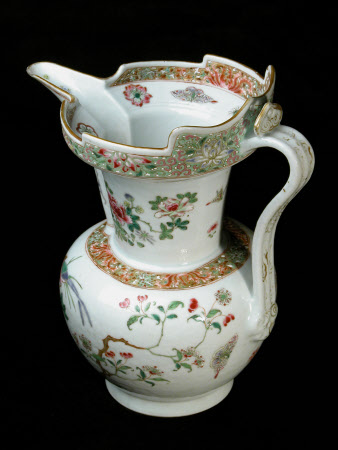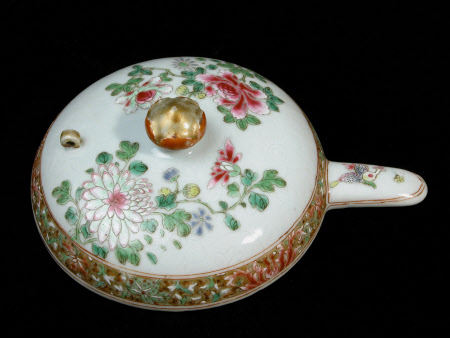Ewer
Category
Ceramics
Date
1730 - 1770
Materials
Porcelain, enamel, gold.
Measurements
300 mm (Height); 100 mm (Diameter)
Place of origin
Jingdezhen
Order this imageCollection
Saltram, Devon
NT 870849.2
Summary
Ewer, porcelain, with a globular body, a funnel-shaped neck, a ‘monk’s cap’ rim and lid with a bud-shaped finial, a long spout and a flat, curved handle with a bud-shaped thumb piece, made in Jingdezhen, Jiangxi Province, China, Qianlong period (1736–95), mid-18th century, decorated in famille rose (‘pink family’) enamels and gold with birds and flowers and bands of stylised flowers and foliage.
Full description
The shape of the ewer originates in Tibet, where such ewers, made of metal, were used in Lamaist Buddhist ceremonies. After the form began to be produced in Chinese porcelain during the Yuan dynasty (1279–1368), it came to be called sengmaohu 僧帽壶 or ‘monk’s cap ewer’, as it was thought to resemble a Tibetan Buddhist monk’s hat. This particular combination of ewer and basin was made for the Western market, as utensils for the toilette.
Provenance
Accepted by HM Government in lieu of inheritance tax and allocated to the National Trust, 1957.

